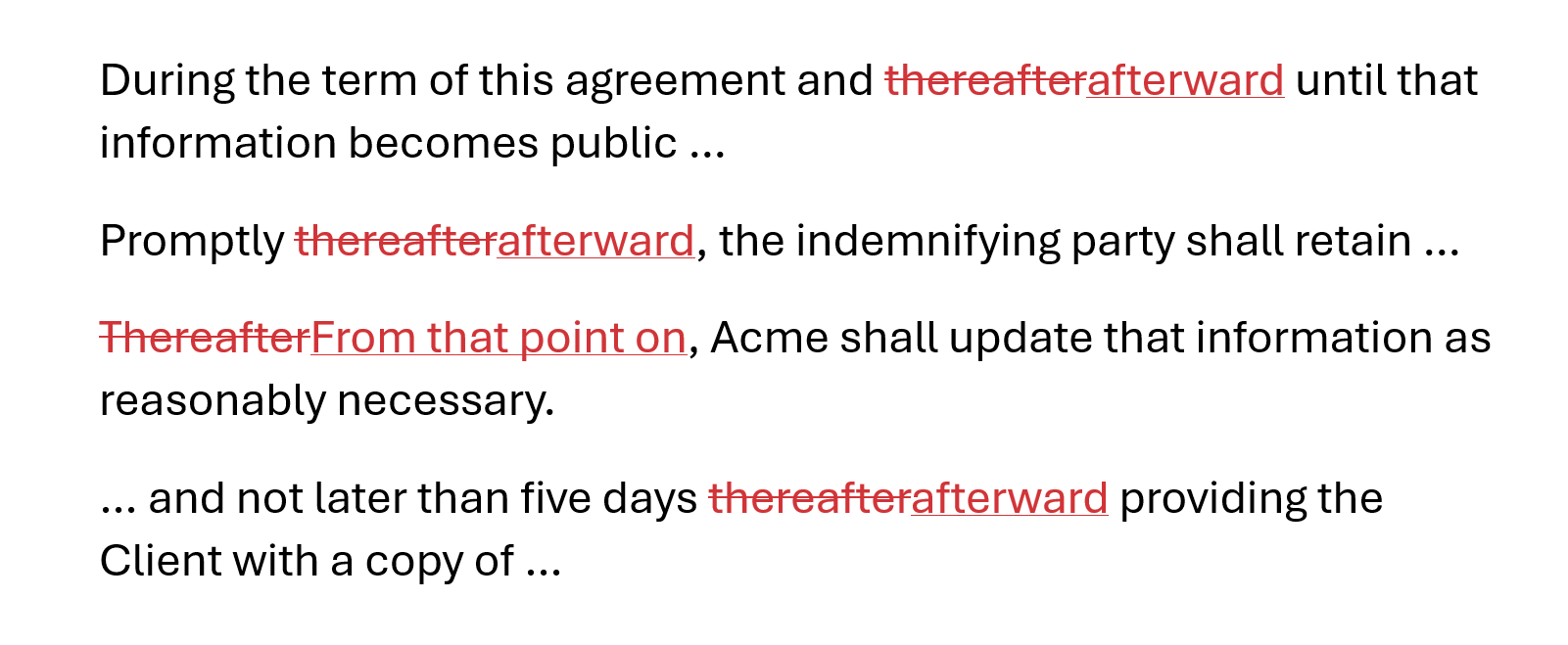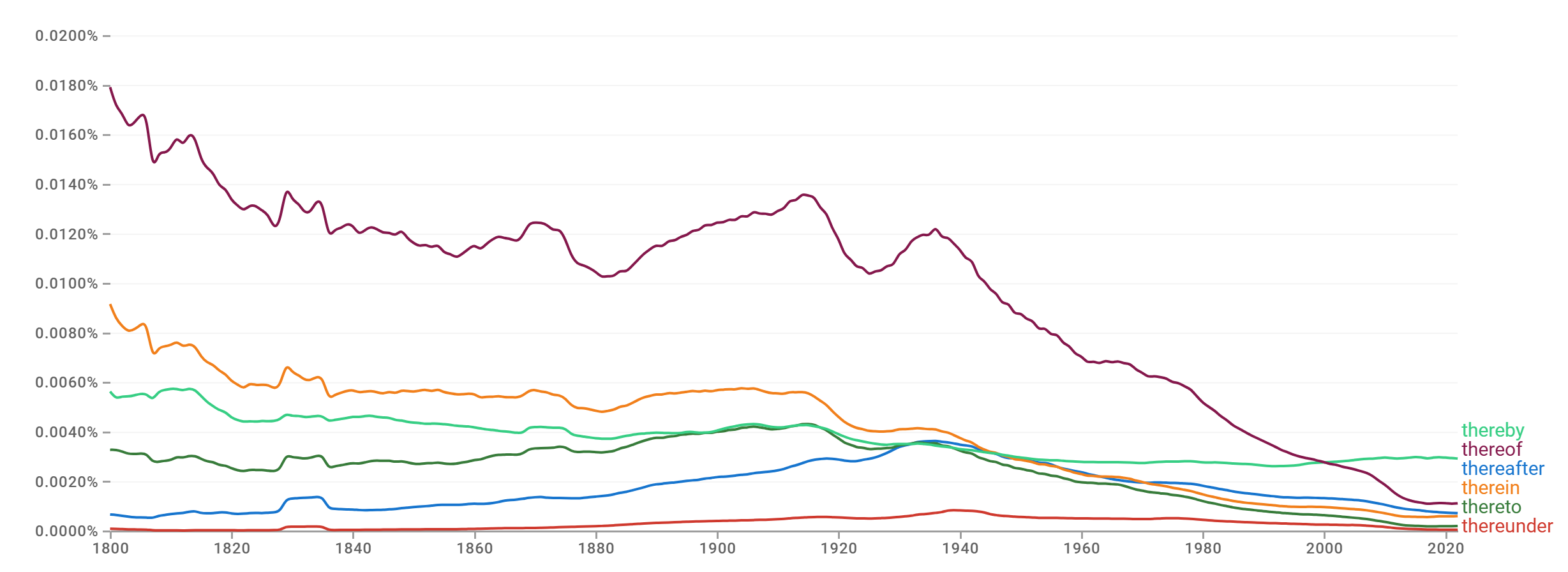The relentless Kevin Toll (see this blog post) has proposed that I ditch thereafter. Here are some of his proposed changes to Adams Contracts templates:

Regarding afterward, Garner’s Modern English Usage 37 (5th ed. 2022) says, “Afterwards (= later) is often changed to afterward by American editors, though in popular usage the two forms are used interchangeably. Across World Englishes, afterwards has predominated since the 1600s.”
So I propose we consider afterwards as the contender, not afterward.
Why not after? Here’s what Cambridge Dictionary says:

So afterwards is a better choice than after.
Regarding from this point on, it serves to make it clear, when an end point (usually expressed using until) isn’t included, that an obligation or prohibition is ongoing.
But there are other candidates. How about then? And subsequently? I’m not in a position to choose which alternatives to thereafter are most suitable.
So let’s get to the main issue: What do I think of getting rid of thereafter?
Obviously, I don’t have a problem with thereafter. That could be a function of force of habit; I’m willing to reconsider.
But I haven’t encountered a dictionary that says thereafter is archaic. (Cambridge Dictionary says it’s formal, but that’s no obstacle to using thereafter in contracts—contracts are formal.) And Cambridge Dictionary and Merriam-Webster offer recent nonlegal examples of use of thereafter.
Furthermore, although thereafter has been one of the less popular there– words, it hasn’t seen a signifcant dropoff in use in recent years. See this Ngram:

Perhaps we’re better off sticking with thereafter instead of opening the door to an assortment of more colloquial alternatives.
For now, I’m sticking with thereafter. Let’s hear what you all have to say!

Pesky scriver errors and voice to text.